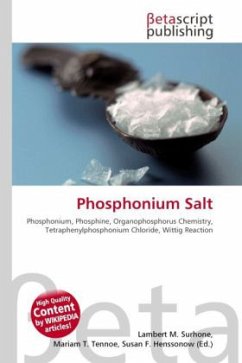
Salt Bridge
Versandkostenfrei!
Versandfertig in 6-10 Tagen
26,99 €
inkl. MwSt.

PAYBACK Punkte
13 °P sammeln!
Please note that the content of this book primarily consists of articles available from Wikipedia or other free sources online. A salt bridge, in chemistry, is a laboratory device used to connect the oxidation and reduction half-cells of a galvanic cell (voltaic cell), a type of electrochemical cell. Salt bridges usually come in two types: glass tube and filter paper. Three types of salt bridges consists of a U-shaped glass tube filled with a relatively inert electrolyte; usually potassium iodide or sodium sulfate is used, although the diagram here illustrates the use of a potassium nitrate so...
Please note that the content of this book primarily consists of articles available from Wikipedia or other free sources online. A salt bridge, in chemistry, is a laboratory device used to connect the oxidation and reduction half-cells of a galvanic cell (voltaic cell), a type of electrochemical cell. Salt bridges usually come in two types: glass tube and filter paper. Three types of salt bridges consists of a U-shaped glass tube filled with a relatively inert electrolyte; usually potassium iodide or sodium sulfate is used, although the diagram here illustrates the use of a potassium nitrate solution. The electrolyte is often gelified with agar to help prevent the intermixing of fluids which might otherwise occur. The conductivity of a glass tube bridge depends mostly on the concentration of the electrolyte solution. An increase in concentration below saturation increases conductivity. Beyond-saturation electrolyte content and narrow tube diameter may both lower conductivity.












